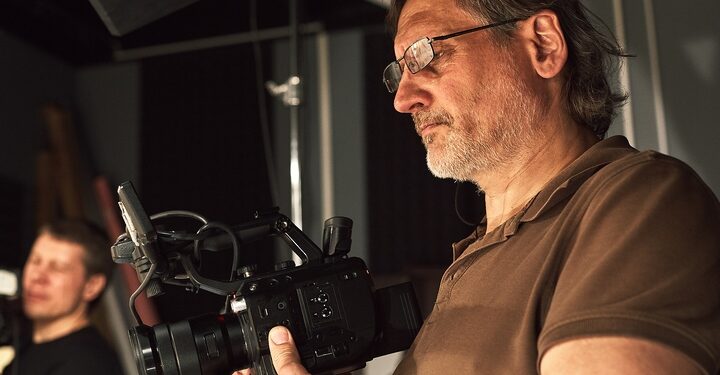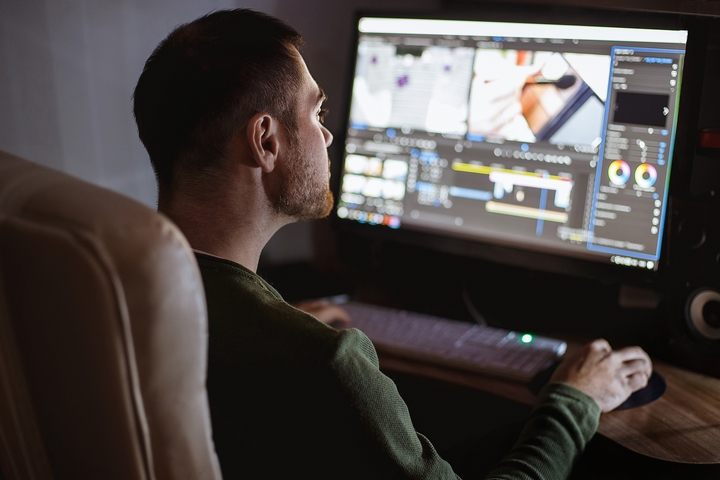How to Create a Short Movie Professionally?

Bringing your visions to life can be an artistic journey of self-discovery and creativity. We can showcase our visions via various visual platforms, like photography, paintings, and even making movies.
While feature-length films can allow you to take more time to explain your plot, characters, and their emotional journey, you can also do this incredibly effectively in a short film. Bringing this out in a short film takes incredible talent that leaves you with a final product that is a masterpiece.
If making movies is one of your passions, you would probably want it to look professional and well done. So whether you’re an aspiring filmmaker or a seasoned one, there are always new tips and tricks you can learn that will take your move-making skills to a whole new level. Together, we can explore some ways you can create a professional-looking short movie.
Read on to learn more!
1. Coming up with a storyline

The first step that you should take when it comes to making a professional short film is coming up with a storyline. Your storyline is the backbone of every creative decision throughout the filmmaking process. Thinking of this before diving into the technical aspects of filmmaking is crucial, as the storyline will impact the other creative directorial decisions you make.
Making your storyline interesting and captivating should be your top priority. Since this is a short film, you won’t have too much time to spend on aspects that a feature-length film would usually have.
2. Writing up a script

Now that you know what you want your film to be about, it is time to write up a script that will most of the necessary information to make this movie. A well-written, solid script can enhance your short film’s quality and professionalism. It will also allow the actors and skilled crew members to deliver their best work! A compelling script also engages the audience, making your movie memorable.
Start your script writing process by creating a basic story outline, highlighting key plot points, character arcs, and the overall structure. This helps you maintain focus and coherence throughout the script. Develop well-rounded characters with distinct personalities, motivations, and flaws. Audiences connect with characters they can relate to or empathize with.
3. Have good storytelling
Many films create a hooking story by creating a compelling opening, building tension in the middle, and providing a satisfying conclusion. While this has proved to work with many movies, you could always experiment and follow your format if that’s how you want to bring your vision to life. Write realistic and meaningful dialogue that serves the story and reveals character traits.
You should also keep in mind that filmmaking is a visual medium. Use descriptive language to convey how scenes should look and feel. Visual cues, such as camera angles and movements, can enhance storytelling and allow the crew to truly bring your vision to fruition.
4. Subtitles
You should also pay heavy attention to subtitles. Not only do they allow people with hearing disabilities to gain a better understanding of what is being said and heard by others, but they also allow audience members to gain a better grasp of what is going on, for example, if they cannot understand what is being said by someone verbally.
You could either implement the subtitles yourself. Alternatively, have someone else use your script and transcribe the videos for you. Subtitling services save you plenty of time.
5. Assembling a cast and crew

Every script needs people to bring it to life. These would be the actors and the crew. A professional cast and crew bring their knowledge and experience to the table. Experienced actors can convey emotions and deliver lines convincingly, while skilled crew members ensure the technical aspects of the film, such as cinematography, sound, and lighting, are top-notch. You are also more likely to have a smooth sailing filming and production process with such an educated cast and crew, which helps to save ample time and money.
Creativity thrives in a collaborative environment. Your cast and crew members may have fresh ideas that enhance your initial concept. The creative process becomes more dynamic and productive when everyone is on the same page and working towards a common goal. This can also work to make your short film more artistic and inventive.
It will also increase the production value, which includes everything from the clarity of the audio to the cinematic quality of the visuals, resulting in a film that looks and sounds like it belongs on the big screen.
6. Editing

Editing all your shots to makea coherent and magical masterpiece is a key step to making a professional film. It’s the stage where the director’s vision truly comes to life, and the story takes shape. Selecting the best takes, arranging them in a coherent sequence, and adding elements like sound, music, and effects to create a compelling narrative takes a lot of hard work and dedication.
On top of this, making the movie more accessible by adding subtitles will allow it to reach a wider audience — something that most professional films do.
Editing helps ensure that the story flows logically and coherently. The editor is responsible for ensuring the audience understands the plot and the relationships between characters. This often involves making difficult decisions about what to include and leave out.
You can also make the editing enhance the emotional impact of a scene, ensure smooth transitions between shots, use useful and impactful sounds and music, and much more!


